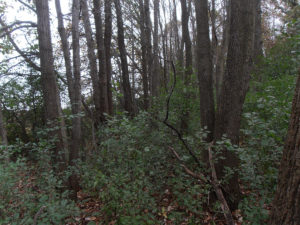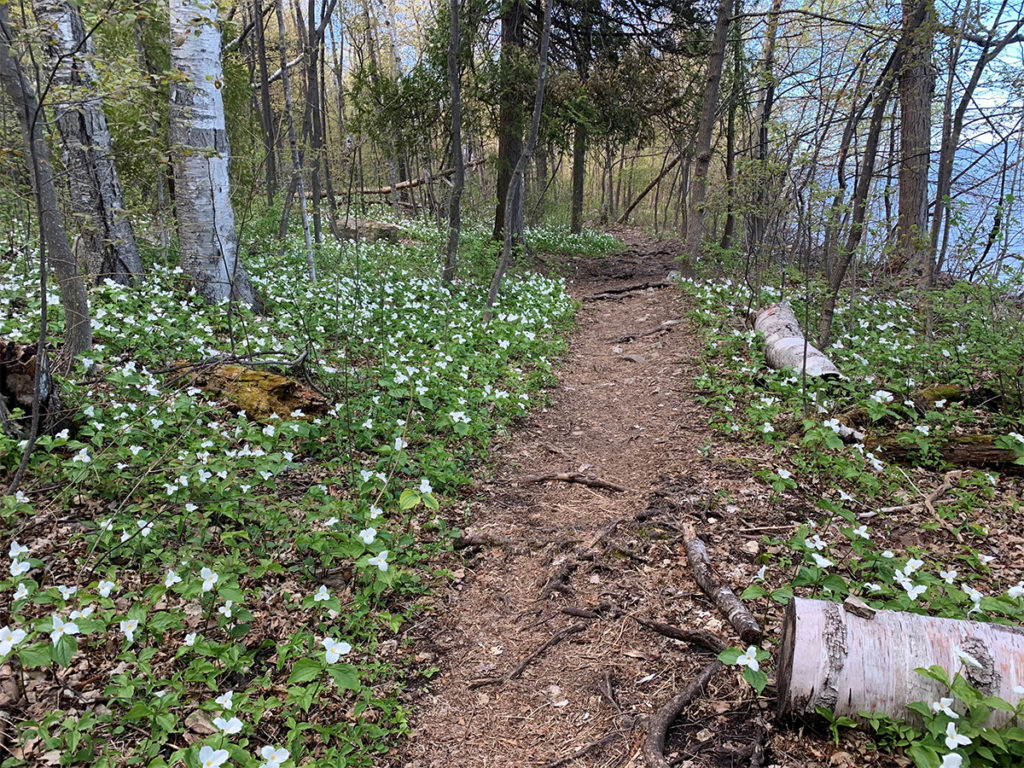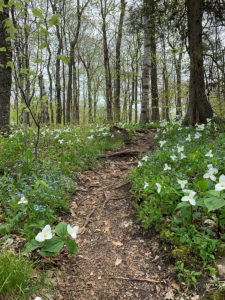 Why Have So Many of Our Native Woodlands Become Degraded?
Why Have So Many of Our Native Woodlands Become Degraded?
Native woodlands have become degraded for a number of reasons such as pests, diseases and fire suppression, but one of the biggest threats to our native forest ecosystems is invasive plant species. Some of the most common invasive species in forest ecosystems include common buckthorn (Rhamnus cathartica), exotic honeysuckles (Lonicera spp.) and garlic mustard (Alliaria petiolata).
Many invasive species were introduced from Europe and Asia and have developed a foothold in our forests, often outcompeting the native species. Common buckthorn and hybrid bush honeysuckle are shrubs that form dense thickets under a woodland canopy that shade out and overtake many native shrub and herbaceous species. In addition, common buckthorn is considered an allelopathic plant species because it contains a toxin that tends to suppress the growth of other native plant species around it. These invasive shrubs are easy to spot because they are the first to green up in the spring and hold onto their leaves until late fall. Garlic mustard is an invasive herbaceous species that forms dense stands overcoming native wildflowers and tree seedlings. Its seeds can survive in the soil for up to seven years, making it very difficult to control. It is usually found actively growing before native plants emerge from the ground in the spring.

Getting to Know Your Woodland and its History
In order to restore your woodland, it is important to understand its history and look for signs of potential threats. Is your woodland comprised of a diversity of plant species or are there dense stands of a single species or just a few species? If so, these conditions could be signs of an invasive plant species. What type of woodland existed in this area historically? For example, are there many large oak trees with dead or dying lower branches that contain a dense understory of shrubs? If so, your woodland historically may have been oak savanna that now has become overgrown due to fire suppression. There are many valuable sources of information that can tell you about the pre-settlement history of your woodland and its natural composition such as books about the original natural communities of Wisconsin, historical aerial imagery dating back to 1937, and maps and other information found on the Wisconsin Department of Natural Resources’ website. This background information will help you determine the best steps to take to restore your woodland’s health.
Different Methods of Controlling Invasive Species
 Controlling the spread of invasive plant species can be done through mechanical, chemical, or biological means, or a combination of all three. For example, small infestations of garlic mustard can be hand-pulled, while larger populations require herbicide treatments. Shrub size common buckthorn and honeysuckle can be cut at the base, removed, and herbicide used on the stumps to prevent regrowth. Once the larger shrubs have been removed, prescribed fire and/or spot herbicide treatments can prevent the growth of new seedlings. The control of invasive species can often be an ongoing battle, but it is worth the effort when you begin to see the transition back to a healthier woodland.
Controlling the spread of invasive plant species can be done through mechanical, chemical, or biological means, or a combination of all three. For example, small infestations of garlic mustard can be hand-pulled, while larger populations require herbicide treatments. Shrub size common buckthorn and honeysuckle can be cut at the base, removed, and herbicide used on the stumps to prevent regrowth. Once the larger shrubs have been removed, prescribed fire and/or spot herbicide treatments can prevent the growth of new seedlings. The control of invasive species can often be an ongoing battle, but it is worth the effort when you begin to see the transition back to a healthier woodland.
Contact Us
Our team of ecologists is experienced with invasive species identification and control methods and are eager to assist you with your woodland restoration project. If you would like to know more about woodland restoration, please contact our senior ecologist and WDNR-assured wetland delineator, Tina Myers, PWS, (262) 317-3389 (Brookfield, Wisconsin office).
